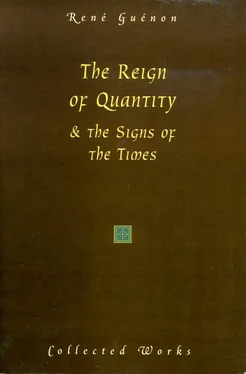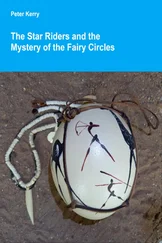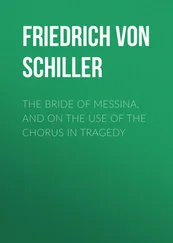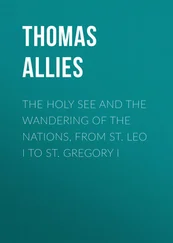It will suffice at this point to call attention, on the one hand, to the extent of the use of the symbolism of the zodiac, especially from a strictly initiatic point of view, and on the other hand, to the direct applications in the field of ritual to which the unfolding of the annual cycle gives rise in most traditional forms.
While on the subject of the qualitative determinations of space and time and their correspondences, it would be a pity not to mention a testimony which is certainly not suspect, as being that of an ‘official’ orientalist, Marcel Granet, who has devoted to such traditional notions a whole section of his book entitled La Pensée chinoise [Paris: A. Michel, 1988]. It goes without saying that he cannot see in these notions anything but singularities, which he is at pains to explain exclusively in terms of ‘psychology’ and ‘sociology’, but there is no need to pay any attention here to such interpretations, for they are the inevitable outcome of the prejudices of modernity in general and of the universities in particular, only the noting of the fact being relevant here; from this point of view, a striking picture can be found in the book in question of the antithesis presented by a traditional civilization, on the one hand (and this would be no less true for any such civilization other than the Chinese) and the ‘quantitative’ civilization of the modern West on the other.
The decrease is known to be proportionate to the numbers 4, 3, 2, 1, their total, 10, comprising the entire cycle; human life itself is moreover well known to be considered as growing shorter from one age to another, which amounts to saying that life passes by with ever-increasing rapidity from the beginning to the end of a cycle.
It should be pointed out that there is a difficulty in this connection, at least in appearance: in the hierarchy of kinds, if one considers the relation of one particular kind to a second less general kind, which is as it were a species in relation to the first, the first plays the part of ‘matter’ and the second the part of ‘form’; thus at first sight the relation appears to apply in a reverse direction, though actually it is not comparable to the relation of species to individuals; moreover, it is envisaged from a purely logical point of view, as if it were the relation of a subject and an attribute, the subject corresponding to the designation of the kind and the attribute to that of the ‘specific difference’.
A. M. Hocart, Les Castes (Paris: P. Geuthner, 1938), p27. [ Caste : A Comparative Study (New York: Russell and Russell, 1968).]
It may be noted that all that still persists in the way of authentically initiatic organizations in the West, whatever may be their present state of decadence, has no other origin than this. Initiations belonging to other categories disappeared completely a long time ago.
It should be noted that the French word métier is etymologically derived from the Latin ministerium , and properly means ‘function’. [The word métier is here translated as ‘craft’. Its exact meaning is somewhere between ‘craft’ and ‘vocation’ as commonly understood today, and it does not appear to have a precise equivalent in modern English. Tr.]
On this subject see particularly the Meno of Plato.
It may be remarked that the machine is in a sense the opposite of the tool, and is in no way a ‘perfected tool’ as many imagine, for the tool is in a sense a ‘prolongation’ of the man himself, whereas the machine reduces the man to being no more than its servant; and, if it was true to say that ‘the tool engenders the craft’, it is no less true that the machine kills it; the instinctive reactions of the artisans against the first machines thus explain themselves.
Such people could say with Muḥyi ’d-Dīn ibn al-‘Arabī: ‘My heart has become capable of all forms: it is a pasture for gazelles and a monastery for Christian monks, and a temple for idols, and the Kaabah of the pilgrim, and the table of the Thorah and the book of the Quran . I am the religion of Love, whatever road his camels may take; my religion and my faith are the true religion.’
On this subject, see A. K. Coomaraswamy, ‘ Ākiṃchañña : Self-Naughting’, New Indian Antiquary (Bombay) 3 (1940).
It will easily be understood from this why, in craft initiations such as Compagnonnage just as much as in religious orders, it is forbidden to designate an individual by his profane name; there is still a name, and therefore an individuality, but it is an individuality already ‘transformed’, at least virtually, by the very fact of initiation. [Regarding the Compagnonnage, see Perspectives on Initiation , chap. 5, n6; also Studies in Freemasonry and the Compagnonnage . Ed.]
There could only be a quantitative difference, because one worker may work taster than another (and all the ‘ability’ that is demanded of him consists only in such speed), but from the qualitative point of view the product would always be the same, since it is determined neither by the worker’s mental conception of the work nor by a manual dexterity directed to giving it its outward shape, but only by the performance of the machine, the man having nothing to do but to ensure its proper working.
This is the meaning of Eckhart’s expression ‘fused, but not confused’, which A. K. Coomaraswamy, in the article mentioned earlier, very pointedly compares with the meaning of the Sanskrit expression bhedabheda , ‘distinction without difference’, that is, without separation.
Where, for example, has anyone ever seen a ‘heavy material point’, or a ‘perfectly elastic solid’, an ‘unstretchable and weightless thread’, or any other of the no less imaginary ‘entities’ with which this science is replete, though it is regarded as being above all else ‘rational’.
This adage, like another according to which nihil est in intellectu quod non prius fuerit in sensu (and this is the first formulation of what was later to be called ‘sensualism’) is among those that can be assigned to no particular author, and it is likely that they belong only to the period of decadence of scholasticism, that is, to a time that is in fact, despite current ‘chronology’, not so much the end of the Middle Ages as the beginning of modern times — provided that it is right, as has been suggested elsewhere, to date that beginning as far back as the fourteenth century.
In this connection the scholastic adage of the decadent period could be contrasted with the conceptions of Saint Thomas Aquinas himself concerning the angelic state, ubi omne individuum est species infima . This means that the differences between the angels are not analogous to the ‘individual differences’ of our world (the word individuum thus being not entirely correct here, as supra-individual states are in question), but to ‘specific differences’; the true reason for this is that each angel represents as it were the expression of a divine attribute, as is shown clearly by the constitution of the names in the Hebrew angelology.
Читать дальше











